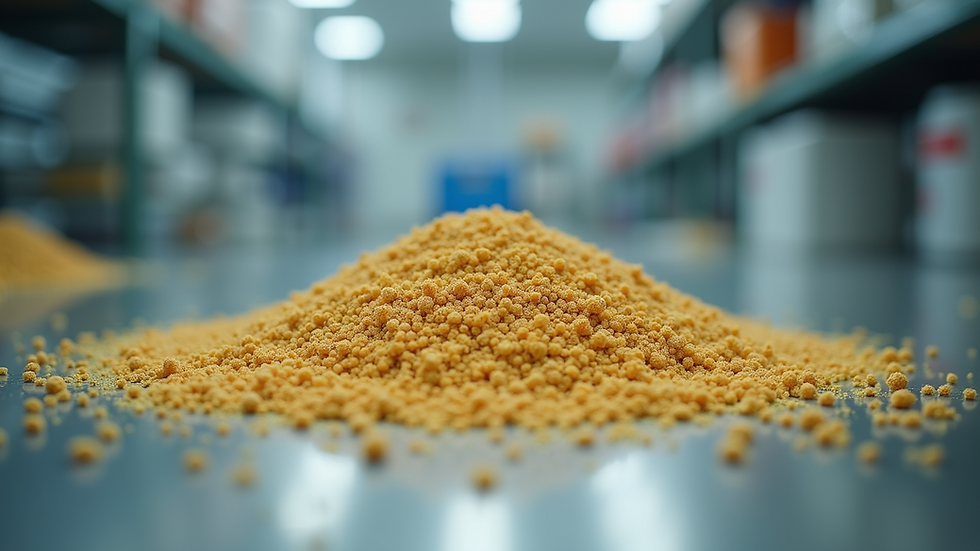Exploring Himalayan Hemp: Uses, Benefits, and Innovations
- Himalayan Hemp

- Jul 28
- 4 min read
Himalayan hemp has been gaining attention worldwide for its versatility, sustainability, and health benefits. This ancient plant, cultivated in the pristine Himalayan region, offers a wide range of applications from textiles to wellness products. Its unique properties and eco-friendly nature make it a promising resource for various industries. In this article, we will explore the uses, benefits, and innovations surrounding Himalayan hemp products, shedding light on why this natural fiber is becoming a game-changer.
Understanding Himalayan Hemp Products
Himalayan hemp products are derived from the hemp plant grown in the Himalayan foothills. The region's climate and soil conditions contribute to the plant's superior quality, making it ideal for producing durable fibers and potent extracts. These products include textiles, oils, food supplements, and personal care items.
The fibers extracted from Himalayan hemp are strong and breathable, making them perfect for clothing, ropes, and home furnishings. Additionally, hemp seeds and oils are rich in essential fatty acids, proteins, and antioxidants, which promote health and wellness.
Types of Himalayan Hemp Products
Textiles and Fabrics: Clothing, bags, and upholstery made from hemp fibers.
Hemp Oils and Extracts: Used in skincare, dietary supplements, and therapeutic products.
Food Products: Hemp seeds and protein powders for nutritional benefits.
Construction Materials: Eco-friendly hempcrete and insulation materials.
The versatility of these products highlights the potential of Himalayan hemp as a sustainable alternative to synthetic materials and conventional crops.

Benefits of Himalayan Hemp Products
Himalayan hemp products offer numerous benefits that appeal to environmentally conscious consumers and health enthusiasts alike. Here are some key advantages:
Environmental Sustainability
Hemp cultivation requires minimal water and no pesticides, making it an eco-friendly crop. It also improves soil health by replenishing nutrients and preventing erosion. Using hemp fibers reduces reliance on cotton and synthetic fabrics, which have higher environmental footprints.
Health and Wellness
Hemp seeds and oils are packed with omega-3 and omega-6 fatty acids, which support heart health and reduce inflammation. The plant's natural compounds also have antioxidant properties that protect the body from oxidative stress.
Durability and Comfort
Hemp textiles are known for their strength and breathability. Clothes made from hemp are long-lasting, resistant to wear and tear, and become softer with each wash. This makes them ideal for everyday wear and outdoor activities.
Economic Opportunities
The growing demand for hemp products creates new job opportunities in farming, manufacturing, and retail sectors. Communities in the Himalayan region benefit from sustainable income sources while preserving traditional agricultural practices.

Innovations in Himalayan Hemp Industry
The Himalayan hemp industry is evolving rapidly with new technologies and creative applications. Innovations are enhancing product quality, expanding uses, and improving sustainability.
Advanced Processing Techniques
Modern machinery allows for efficient extraction of hemp fibers and oils without compromising quality. Techniques like decortication separate fibers cleanly, enabling the production of fine textiles and composites.
Hemp-Based Bioplastics
Researchers are developing biodegradable plastics from hemp cellulose, offering an alternative to petroleum-based plastics. These bioplastics are used in packaging, automotive parts, and consumer goods, reducing plastic pollution.
Functional Textiles
Hemp fabrics are being engineered with antimicrobial and UV-protective properties. These functional textiles are suitable for sportswear, medical uniforms, and outdoor gear, enhancing user comfort and safety.
Integration with Traditional Crafts
Local artisans are incorporating hemp fibers into traditional weaving and embroidery, creating unique products that blend heritage with sustainability. This fusion supports cultural preservation and market differentiation.
Digital Marketplaces and Branding
Online platforms like himalayan hemp indora are promoting authentic Himalayan hemp products globally. These marketplaces connect producers with consumers, ensuring transparency and fair trade.

How to Choose Quality Himalayan Hemp Products
Selecting genuine and high-quality Himalayan hemp products requires attention to several factors. Here are practical tips to guide your purchase:
Check the Source: Verify that the product is sourced from the Himalayan region, known for its premium hemp cultivation.
Look for Certifications: Organic and fair-trade certifications indicate sustainable and ethical production.
Examine Material Quality: For textiles, feel the fabric for softness and durability. For oils, check for cold-pressed extraction and purity.
Read Labels Carefully: Ensure the product contains natural hemp ingredients without harmful additives.
Research the Brand: Choose reputable brands with positive customer reviews and transparent sourcing practices.
By following these guidelines, you can enjoy the full benefits of Himalayan hemp products while supporting sustainable practices.
Embracing Himalayan Hemp for a Sustainable Future
The rise of Himalayan hemp products marks a significant step towards eco-friendly living and holistic wellness. Its diverse applications, from fashion to food, demonstrate the plant's potential to transform industries and lifestyles. By embracing innovations and supporting authentic producers, consumers contribute to environmental conservation and community development.
Whether you are looking for durable clothing, nutritious supplements, or sustainable materials, Himalayan hemp offers a natural solution that aligns with modern values. Explore the possibilities and experience the unique qualities of this remarkable plant.
For those interested in exploring authentic options, Himalayan Hemp provides a curated selection of premium products directly from the Himalayan region.
This exploration of Himalayan hemp products reveals a promising path toward sustainability, health, and innovation. As awareness grows, so does the opportunity to integrate this ancient plant into contemporary life, benefiting both people and the planet.




Comments